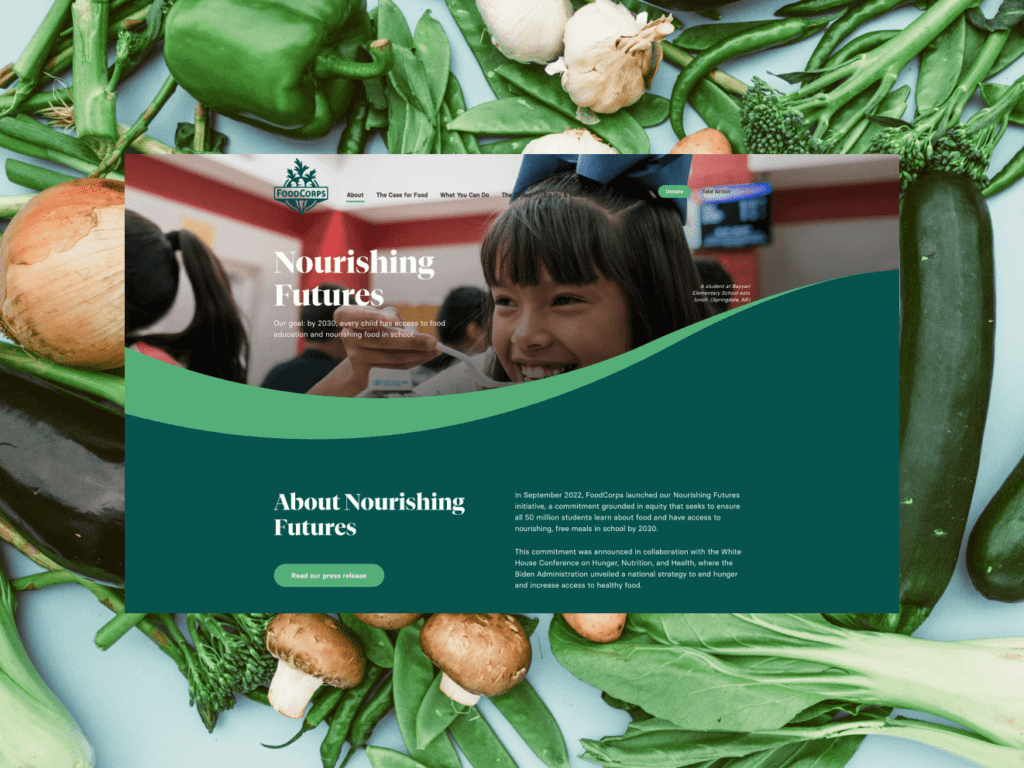Not every project is a good fit for Outside.
When we find a Request for Proposals or receive an inquiry from a potential client, we do our research to see whether we’re the right agency for the job. Sometimes, the answer is no.
We don’t reject potential clients or projects because we’re flush and we can afford to; we reject them when we feel there’s a value mis-alignment. In fact, there have been times when Outside is running at a loss and we’ve still chosen to turn down a potential client.
Outside’s purpose, as a company, isn’t to survive just for the sake of surviving. To serve our purpose, we feel a responsibility to take on projects that live up to the values, ambitions, and vision on which we were built. Setting those values aside just to take a project that would keep us afloat or allow us to hire more people wouldn’t serve our purpose, it would negate it.
Every business decision is case and context-specific. When asked, we’re happy to break down our decision explicitly. But there are some general, overhead motivations that guide our client selection process, which we’ll explain here.
Here are the questions we ask ourselves when deciding whether to work with a client:
Do our values align?
Our primary motivation as a business is to benefit the social good—to contribute to solutions that improve the lives of humans while considering the natural world and limited resources we share with all living things.
Because that is our goal, our definition of “success” means something other than earning as much money as possible. Instead, we define success by a set of factors that include how well the service a company is providing benefits its customers, its employees, and the community in which it operates.
Clients like Reality Defender, whose deepfake detection software is a benefit to its customers and to humanity as a whole, separate from any profit motivation, make sense for Outside. The same is true of nonprofit clients like FoodCorps, which focuses on improving nutrition in schools.
We understand that businesses are interested in making money—we, too, want to pay our employees well. But we have declined clients whose primary motivation is profit, and whose benefit to society at large is either an afterthought, an offset, or not a consideration at all.
Sometimes, it’s obvious. Clients that are clearly mission-oriented and would make a good fit stand out right away. Otherwise, we use our best judgment and discretion, and we bring multiple team members—not just leadership—into the research process when appropriate.
To better understand a potential client, we review its existing website, talk to people we know in the client’s industry or similar industries, and think critically about the broader impact of the organization’s business strategy.
For example, does this client provide a service that is genuinely needed? Does it offer a solution to an actual problem, rather than creating a problem in order to sell a product? Does this client work with or benefit other businesses that are having a negative impact on society? Where does the client operate and how does it take its surroundings into account?
Ultimately, there is an element of guesswork involved in getting to know a client and deciding whether we’re the right fit for their needs. We often work with early stage companies that haven’t figured out who they are or where they’re going—these companies may evolve in ways we can’t account for.
The truth is that part of our assessment is based on how well we mesh with the founding or operating team, and whether we feel like we can trust their approach to business. If we have further questions about how a company operates or what its vision is for the future, we reach out directly and ask.

How large is the organization?
We want to provide world-class agency services at an affordable price point, so that small- and medium-sized businesses can compete with large corporations that monopolize industries. That’s why the vast majority—95 percent—of our clients are small businesses and nonprofits. We are much more likely to greenlight a project if the company or organization is made up of 50 people or fewer.
To get into the nitty-gritty: One of our working values is “post-growth,” based on a theory that economic growth generates beneficial effects up to a point—Richard Wilkinson and Kate Pickett put that point at $25,000 GDP/capita in their 2009 book “The Spirit Level.” Beyond that, numerous studies have found that economic growth strains the planet’s resources and puts human wellbeing, on the whole, at risk.
At Outside, we believe in diversified, redistributive, and regenerative economies, which means thinking about how the companies we work with—as well as the company we are—can be better without necessarily being “bigger.” We have declined clients in the past when we saw that contributing to their business strategies would only increase their dominance in an already uneven market.
Who owns the company and who profits from it?
It’s not just about what a company does. The people behind the curtains make a difference, too. We don’t often dismiss companies or organizations outright based on their investors or ownership—these are just two of many factors we take into account.
“We have declined clients whose primary motivation is profit, and whose benefit to society at large is either an afterthought, an offset, or not a consideration at all.”
We work with many venture-backed companies. That said, a company that has an alternative ownership structure, such as an employee- or steward-owned company, is naturally a good fit for us, compared to a company that’s investor-owned, wherein profits are likely to be distributed among people who are already quite economically empowered. We’re also interested in working with companies that are bootstrapped, as they resonate with our goal of prioritizing metrics of success beyond just growth.
How might our involvement influence the business strategy or outcomes?
We offer four broad categories of solutions: copy, design, development, and strategy. Our most intensive projects—like this project with Firefly Partners—bring together all four.
That said, we make a distinction for what we call development-only services. Development-only, or dev-only, services are just technical, rather than strategic or design-oriented. They include creating and maintaining the code that makes an app or website function. We offer dev-only services to clients we would otherwise reject for design or strategy solutions.
We made this decision because, when it comes to development, the final outcome of our work will be similar to the work of another agency, which means our involvement will not have an outsized influence on the way the client operates.
Plus, with surplus from dev-only projects, we can afford to support our goals in Nepal and offer branding, design, and strategy services to small, locally owned, and/or socially conscious companies at a more practical rate.

